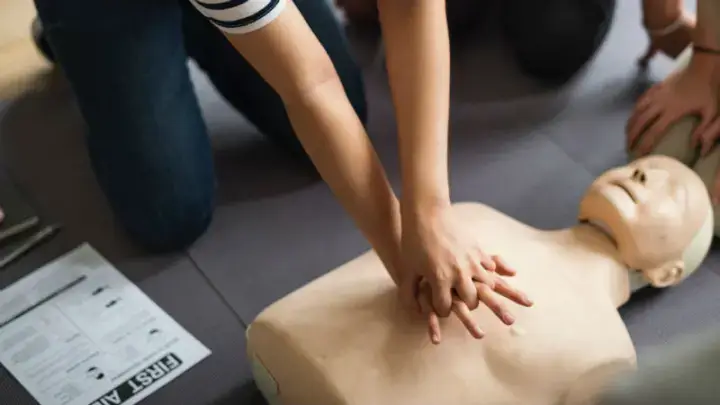
Cardiopulmonary Resuscitation was once a technique known by a few people. We now think nothing of watching shows like Greys. It’s where the characters are doing CPR on patients in almost every episode.
But who invented cardiopulmonary resuscitation, and what is the history of the technique?
Before we get into the history of CPR, it’s good to remember some fundamental knowledge about it. First, CPR can double a patient’s chance of survival within 10 minutes of a cardiac arrest.
Those 10 minutes seem like an eternity as you sit and wait for the ambulance to come. Yet, while waiting for the professionals, knowing CPR can turn a tragic situation into one, you can say at least you did your best. Read on to learn more!
Who Invented Cardiopulmonary Resuscitation: The Groundbreaking Origins
Cardiopulmonary resuscitation (CPR) was developed in the 1950s. American physician Peter Safar and engineer James Elam at the University of Cincinnati discovered it.
In 1957, they published their research on cardiopulmonary resuscitation in Resuscitation. It describes the technique of mouth-to-mouth ventilation and chest compressions performed on animals and humans.
The Evolution of CPR Through Time
The 1700s was when French surgeon Francois Xavier Bichat first developed it. He discovered that using it could help restore circulation when a heart stops working.
This technique was later tested on the military and medical personnel at the U.S. Army in Maryland. In 1960, Safar further refined the method. He published a book introducing the concept of essential life support.
In 1966, the American Heart Association (AHA) published its first Guidelines for CPR, followed by the International Conference on CPR in 1968, which helped popularize the technique.
Since then, medical professionals worldwide have been working to improve the approach. Today, the use of CPR has become an essential life-saving technique. It’s used globally in hospitals, by emergency practitioners, and the lay public.
They have made remarkable advancements in resuscitating patients by providing the medical community.
The Impact of CPR on Saving Lives
CPR is an emergency procedure that combines chest compressions, airway management, and artificial respiration to maintain vital blood flow and oxygen to the brain and other organs until further medical help arrives.
The impact of CPR on saving lives is profound. In the decades since CPR was first invented, hundreds of thousands of lives have been saved.
It is a technique to provide life-saving support when other interventions are unavailable or too slow.
With proper training, anyone can learn and apply the technique. This is why it is so essential for people of all backgrounds to be aware of it. Taking part in CPR training and first aid classes could save someone’s life.
Not only does CPR give medical practitioners more time to try to resuscitate a patient. In addition, it often helps the patient take positive steps toward recovery. Take a test now to get your first aid certification.
Cardiopulmonary Resuscitation: An Essential Life Skill
In conclusion, the one who invented cardiopulmonary resuscitation was beneficial for a crucial advancement. Its prevalence has steadily increased since its inception in the 1950s.
If applied correctly and timely, this process can save a life in a medical emergency. So do your part, and make sure your friends, family, and colleagues know and can perform this life-saving procedure.
Did you find this article helpful? Check out the rest of our blog for more!







